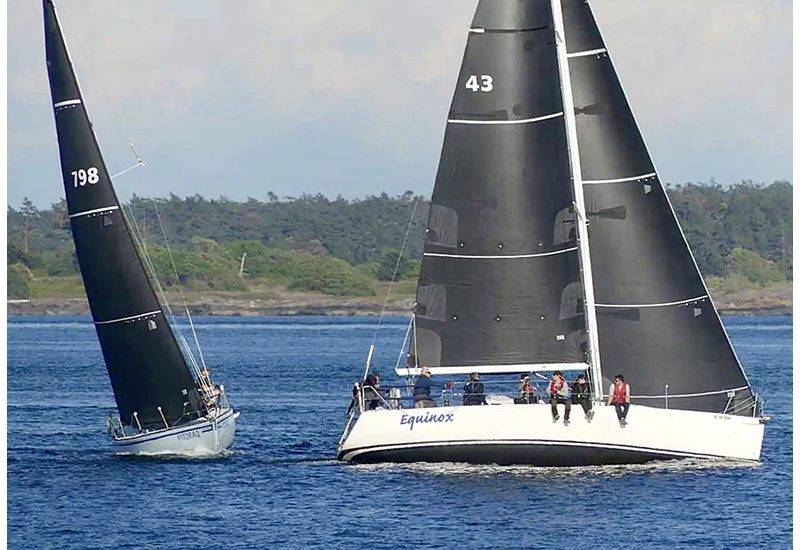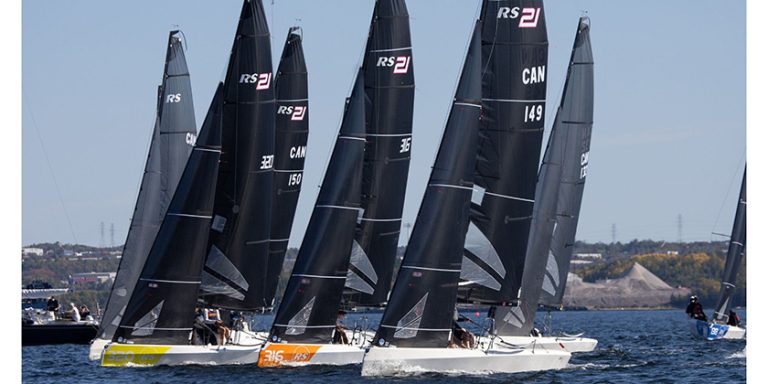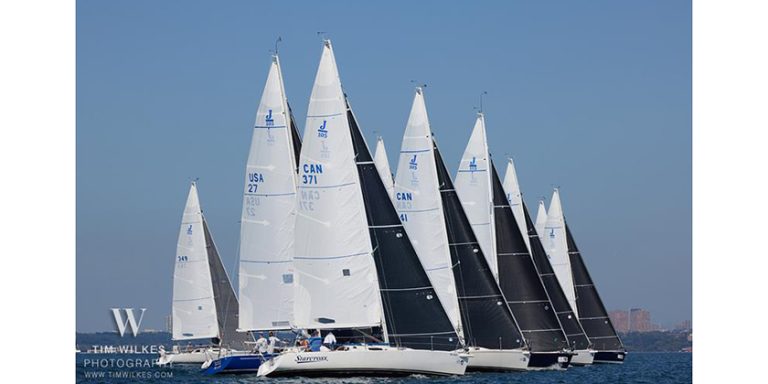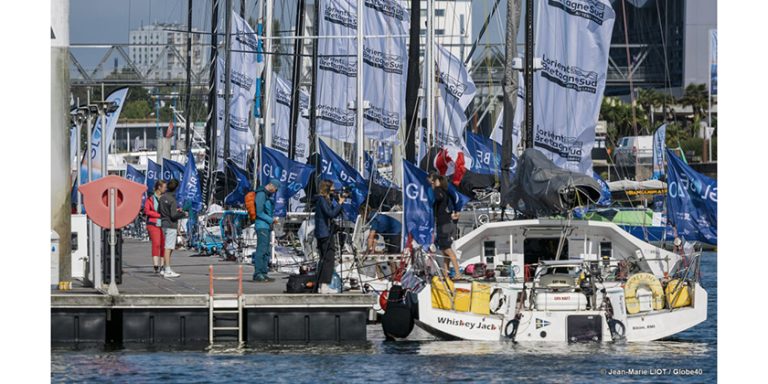Duck or Tack? Navigating Crossing Situations
Jan 31, 2024

By Heather Mahady
The Art of a Well-Executed Duck
Imagine being on port tack, unsure if you can safely cross a starboard tacker. Many ducks go awry due to sailors waiting too long, attempting a last-minute cross, resulting in a sharp turn that disrupts crew coordination and slows down the boat. This not only slows you down, but it costs you progress to windward; and the last-minute duck greatly adds to the risk of a collision – especially between rigs.
An early duck allows you to bear away more gently, starting from three to four boat lengths away while the main and genoa sheets get eased. This also gives your main trimmer time to get the sheet out of the cleat and ready in case a gust hits. As the boat falls off with the sheets eased, it will accelerate. Once you pass the crossing boat’s transom, head up and sail above close-hauled until you burn off the extra speed. You’ll also find a lift off of the back of the other boat’s mainsail that you can take advantage of. After a well-executed duck, you should lose very little distance to windward, and you’ll be free of the worry of being protested.
Strategic and Tactical Decision-Making
Crossing situations compel sailors to make quick decisions. By anticipating the crossing early, you will allow yourself more time to ask the questions that help the decision-making process on whether to duck or tack. Consider what strategic choices you would make if the other boat was not a conflict.
- Where is the most pressure or the next shift?
- How close am I to the layline for the next mark?
- Will I have a lane and clear air if I choose to tack?
Additionally, consider tactical questions to gain an advantage in crossing situations. Crossing situations also offer opportunities to make gains, and it’s likely that only you or your competitor are currently on an optimal course.
- Do I want to stay near this competitor?
- Which choice will lead to an advantage for the next cross?
- If I duck, are they likely to tack on top and cover?
- Is there a leebow opportunity for me if I tack?
Balancing strategy and tactics is essential, with strategy taking precedence in the early stages and tactics becoming critical when facing your closest competitors towards the end of a race.
Choosing to Duck Wisely
Opting to duck can be the best decision for strategic or tactical reasons, allowing the helmsperson more time to consider their options without risking a protest. If the course you are currently on is the course you’d like to keep, ducking is the best option. Watching video clips of well-executed ducks can provide valuable insights into effective techniques. With a successful duck, the ducking boat can transition from trailing to leading at the next crossing.
Choosing to Tack Wisely
There are scenarios where choosing to tack instead of duck is the best call. The most obvious is when you are in a position where you would like to tack regardless of the other boat’s obstruction of your current course, whether for a layline, better breeze or current. The other major reason being an opportunity to leebow the windward boat. With a tight leebow, the goal is to encourage the other boat to tack away as soon as possible. With a conservative leebow, both boats have a lane, and can continue sailing the same direction. The leebow is a great tactic for one-design fleet racing, where every small gain counts. But in mixed-fleet racing, if the starboard tack boat is bigger and quicker, it will likely roll right past you – and that hurts.

Navigating Rules
When sailing on port and crossing close ahead of a starboard tacker, the potential for a protest looms even if the starboard boat is instructed to hold its course. If the helmsperson on the starboard tack boat becomes apprehensive and bears off to avoid a collision, the port tacker will lose the protest without compelling witnesses. Rule 14 dictates that a right-of-way boat failing to avoid a collision can be penalized. Understanding the limitations of the starboard tack boat’s field-of-view and not putting oneself in a risky position is crucial.
If you’re in a situation where you have decided to duck, that maneuver is less likely to make the other skipper nervous, as your intentions should be clear with your powered-up bear away. However, if you have chosen to tack, especially if it will be a tight leebow tack, you risk the other skipper crash-tacking to avoid you. Again, if it is a close call, Rule 14 may land you on the losing side of the protest room. Executing a tight leebow tack is a maneuver best attempted with a well-practiced crew.
Making a Decision Early
Embracing a strategic mindset alongside proficient ducking and tacking techniques empowers sailors to navigate crossing situations effectively, ultimately sharpening their competitive edge. Whether opting to tack or duck, it’s wise to make a decision when you are still four boat lengths away and communicate the plan clearly with your crew. Although a sudden wind shift may alter your fortunes and allow you to cross ahead, it is better to abandon a maneuver that you are prepared for than to risk executing a last-minute crash-tack or duck. This proactive approach ensures a smoother and more controlled navigation of crossing situations, contributing to a more successful performance on the racecourse.

Heather Mahady is the General Manager of UK Sailmakers International. She is based on Vancouver Island in the Pacific Northwest, and is a passionate sailboat racer, sailmaker, and sustainability advocate.















